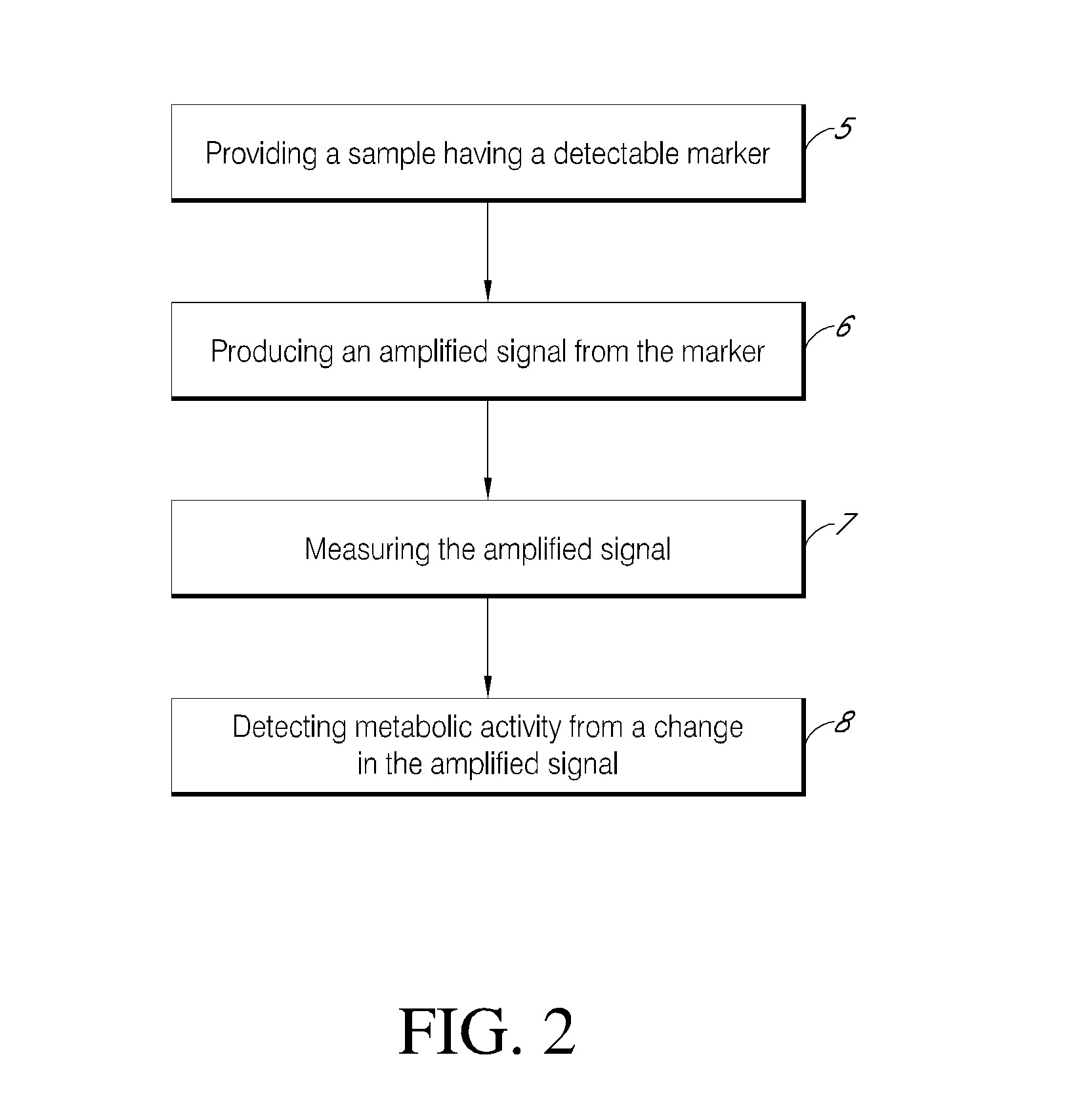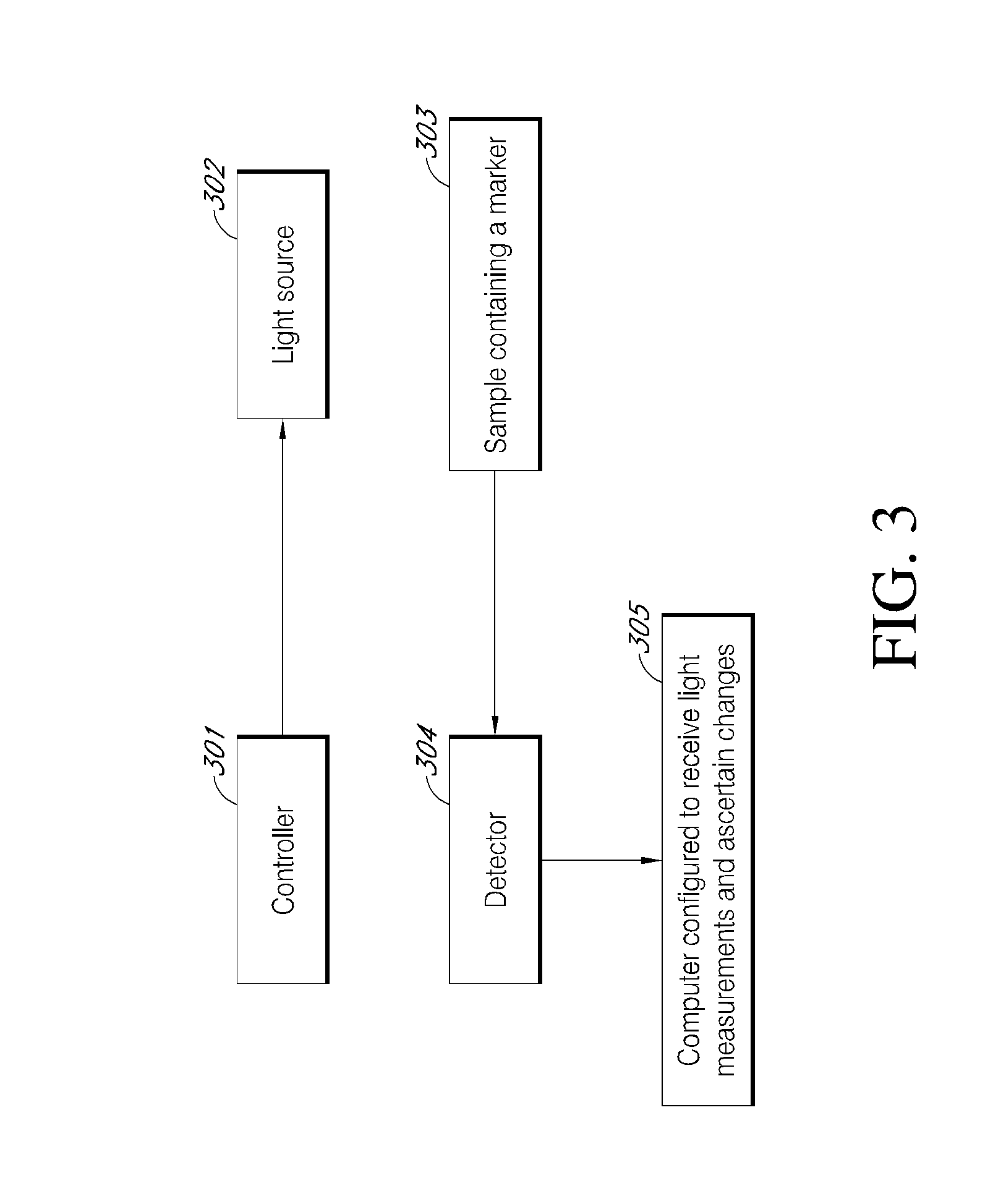Rapid detection of metabolic activity
- Summary
- Abstract
- Description
- Claims
- Application Information
AI Technical Summary
Benefits of technology
Problems solved by technology
Method used
Image
Examples
examples
[0177]Pathogen Detection with Lycopene Marker
[0178]A serum sample was inoculated with 107 cfu / mL methicillin-resistant Staphylococcus aureus (“MRSA”). Using a 532 nm wavelength, the Raman scattering profiles were measured as a function of time. The peak at 1516 cm−1 was attributed to lycopene, and it was observed that this peak decreased over time reflecting the consumption of lycopene by metabolically active bacteria, as indicated by the 4 traces corresponding to 0.1 minutes, 10 minutes, 15 minutes and 20 minutes (See FIG. 14). Although not depicted in FIG. 14, the other lycopene peaks at 1156 cm−1 also show a similar behavior.
[0179]FIG. 15 illustrates the normalized intensity v. time profile of the 1516 cm−1 lycopene peak in the serum of a healthy volunteer, with 4 parts added broth and various amounts (no pathogen, 101 cfu / mL, 103 cfu / mL, 105 cfu / mL, and 107 cfu / mL) of added S. aureus bacteria. In all cases, for samples with added bacteria, the peak heights decrease as a function...
PUM
 Login to View More
Login to View More Abstract
Description
Claims
Application Information
 Login to View More
Login to View More - R&D
- Intellectual Property
- Life Sciences
- Materials
- Tech Scout
- Unparalleled Data Quality
- Higher Quality Content
- 60% Fewer Hallucinations
Browse by: Latest US Patents, China's latest patents, Technical Efficacy Thesaurus, Application Domain, Technology Topic, Popular Technical Reports.
© 2025 PatSnap. All rights reserved.Legal|Privacy policy|Modern Slavery Act Transparency Statement|Sitemap|About US| Contact US: help@patsnap.com



